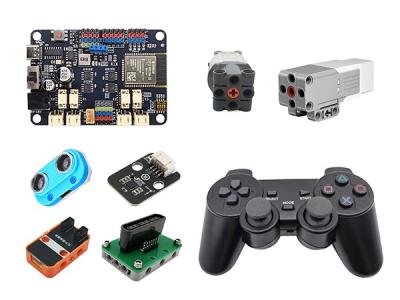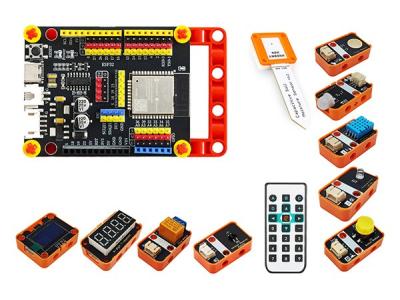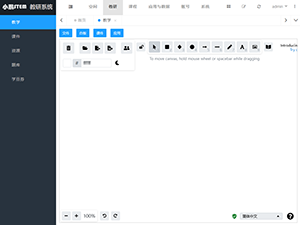ESP32 + Arduino使用TFT_eSPI库
重要提示:
本文使用的TFT显示屏驱动芯片:ST7789V,驱动程序:C (TFT_eSPI库),主控:ESP32,连接方式:SPI
TFT_eSPI是用于TFT-LCD液晶屏的Arduino图形库,可支持下面多种液晶屏驱动芯片:
- ILI9163
- ILI9225
- ILI9341
- ILI9481 (DMA not supported with SPI)
- ILI9486 (DMA not supported with SPI)
- ILI9488 (DMA not supported with SPI)
- HX8357D
- S6D02A1
- SSD1351
- SSD1963
- ST7735
- ST7789
- ST7796
- GC9A01
之前在淘宝买了一块2.4寸240×320像素的SPI串口屏(使用的驱动芯片是ST7789V),下面尝试使用TFT_eSPI库在Arduino+ESP32上快速点亮这个屏幕。屏幕上有8个引脚,我对应的接线如下(我买的这个屏幕背光线不接悬空的话屏幕不会亮)
| ESP32引脚 | ST7789引脚 | 功能 |
|---|---|---|
| GND | GND | 接地 |
| 3V3 | VCC | 电源 |
| 18 | SCL | SPI时钟 |
| 23 | SDA(MOSI) | SPI主出从入 |
| 26 | RES | 复位引脚 |
| 27 | DC | 数据/命令选择 |
| 5 | CS | SPI片选 |
| 22 | BLK | 背光控制 |
在Arduino的库管理器中下载TFT_eSPI库,之后在该库的路径下(C:\Users\xx\Documents\Arduino\libraries\TFT_eSPI)打开User_Setup.h文件。User_Setup.h中有一些需要自己配置的宏,需要仔细阅读这个头文件中的注释。几个比较关键的地方如下:
(1)选择对应的液晶屏驱动芯片,取消注释
// Only define one driver, the other ones must be commented out
//#define ILI9341_DRIVER // Generic driver for common displays
//#define ILI9341_2_DRIVER // Alternative ILI9341 driver, see https://github.com/Bodmer/TFT_eSPI/issues/1172
//#define ST7735_DRIVER // Define additional parameters below for this display
//#define ILI9163_DRIVER // Define additional parameters below for this display
//#define S6D02A1_DRIVER
//#define RPI_ILI9486_DRIVER // 20MHz maximum SPI
//#define HX8357D_DRIVER
//#define ILI9481_DRIVER
//#define ILI9486_DRIVER
//#define ILI9488_DRIVER // WARNING: Do not connect ILI9488 display SDO to MISO if other devices share the SPI bus (TFT SDO does NOT tristate when CS is high)
#define ST7789_DRIVER // Full configuration option, define additional parameters below for this display
//#define ST7789_2_DRIVER // Minimal configuration option, define additional parameters below for this display
//#define R61581_DRIVER
//#define RM68140_DRIVER
//#define ST7796_DRIVER
//#define SSD1351_DRIVER
//#define SSD1963_480_DRIVER
//#define SSD1963_800_DRIVER
//#define SSD1963_800ALT_DRIVER
//#define ILI9225_DRIVER
//#define GC9A01_DRIVER(2)定义屏幕尺寸,我的屏幕是240×320像素,因此选择TFT_WIDTH为240,TFT_HEIGHT为320
// For ST7789, ST7735, ILI9163 and GC9A01 ONLY, define the pixel width and height in portrait orientation
// #define TFT_WIDTH 80
// #define TFT_WIDTH 128
#define TFT_WIDTH 240 // ST7789 240 x 240 and 240 x 320
// #define TFT_HEIGHT 160
// #define TFT_HEIGHT 128
// #define TFT_HEIGHT 240 // ST7789 240 x 240
#define TFT_HEIGHT 320 // ST7789 240 x 320
// #define TFT_HEIGHT 240 // GC9A01 240 x 240(3) 定义对应模块的引脚
// For ESP32 Dev board (only tested with ILI9341 display)
// The hardware SPI can be mapped to any pins
#define TFT_MISO 19
#define TFT_MOSI 23
#define TFT_SCLK 18
#define TFT_CS 5 // Chip select control pin
#define TFT_DC 27 // Data Command control pin
#define TFT_RST 26 // Reset pin (could connect to RST pin)
#define TFT_BL 22
//#define TFT_RST -1 // Set TFT_RST to -1 if display RESET is connected to ESP32 board RST(4)定义用到的字体(由于会占用单片机存储空间,没用的字体可以注释掉)
// Comment out the #defines below with // to stop that font being loaded
// The ESP8366 and ESP32 have plenty of memory so commenting out fonts is not
// normally necessary. If all fonts are loaded the extra FLASH space required is
// about 17Kbytes. To save FLASH space only enable the fonts you need!
#define LOAD_GLCD // Font 1. Original Adafruit 8 pixel font needs ~1820 bytes in FLASH
#define LOAD_FONT2 // Font 2. Small 16 pixel high font, needs ~3534 bytes in FLASH, 96 characters
#define LOAD_FONT4 // Font 4. Medium 26 pixel high font, needs ~5848 bytes in FLASH, 96 characters
#define LOAD_FONT6 // Font 6. Large 48 pixel font, needs ~2666 bytes in FLASH, only characters 1234567890:-.apm
#define LOAD_FONT7 // Font 7. 7 segment 48 pixel font, needs ~2438 bytes in FLASH, only characters 1234567890:-.
#define LOAD_FONT8 // Font 8. Large 75 pixel font needs ~3256 bytes in FLASH, only characters 1234567890:-.
//#define LOAD_FONT8N // Font 8. Alternative to Font 8 above, slightly narrower, so 3 digits fit a 160 pixel TFT
#define LOAD_GFXFF // FreeFonts. Include access to the 48 Adafruit_GFX free fonts FF1 to FF48 and custom fonts(5)其它设置如SPI频率,按照User_Setup.h头文件中的提示来设置。
// Define the SPI clock frequency, this affects the graphics rendering speed. Too
// fast and the TFT driver will not keep up and display corruption appears.
// With an ILI9341 display 40MHz works OK, 80MHz sometimes fails
// With a ST7735 display more than 27MHz may not work (spurious pixels and lines)
// With an ILI9163 display 27 MHz works OK.
// #define SPI_FREQUENCY 1000000
// #define SPI_FREQUENCY 5000000
// #define SPI_FREQUENCY 10000000
// #define SPI_FREQUENCY 20000000
// #define SPI_FREQUENCY 27000000
#define SPI_FREQUENCY 40000000
// #define SPI_FREQUENCY 55000000 // STM32 SPI1 only (SPI2 maximum is 27MHz)
// #define SPI_FREQUENCY 80000000
// Optional reduced SPI frequency for reading TFT
#define SPI_READ_FREQUENCY 20000000
// The XPT2046 requires a lower SPI clock rate of 2.5MHz so we define that here:
#define SPI_TOUCH_FREQUENCY 2500000
// The ESP32 has 2 free SPI ports i.e. VSPI and HSPI, the VSPI is the default.
// If the VSPI port is in use and pins are not accessible (e.g. TTGO T-Beam)
// then uncomment the following line:
//#define USE_HSPI_PORT在测试的时候发现屏幕上某些颜色很奇怪,比如设置字体为蓝色但显示红色。原因是在ST7789芯片中MADCTL (36h)寄存器的第3位控制像素颜色顺序,当该位为0时颜色按R-G-B显示,当该位为1时按B-G-R显示:
Bit D3- RGB/BGR Order
“0” = RGB (When MADCTL D3=”0”)
“1” = BGR (When MADCTL D3=”1”)
出现这种问题时可以在User_Setup.h中取消掉下面某一行的注释,来控制颜色顺序
// For ST7735, ST7789 and ILI9341 ONLY, define the colour order IF the blue and red are swapped on your display
// Try ONE option at a time to find the correct colour order for your display
// #define TFT_RGB_ORDER TFT_RGB // Colour order Red-Green-Blue
#define TFT_RGB_ORDER TFT_BGR // Colour order Blue-Green-Red初次使用过程中还可能遇到屏幕方向或者颜色反转的问题,可以通过TFT_eSPI提供的函数来控制屏幕旋转和颜色反转(参考光学中的互补色,如白-黑,蓝-黄)
/***************************************************************************************
** Function name: invertDisplay
** Description: invert the display colours i = 1 invert, i = 0 normal
***************************************************************************************/
void TFT_eSPI::invertDisplay(bool i)
/***************************************************************************************
** Function name: setRotation
** Description: rotate the screen orientation m = 0-3 or 4-7 for BMP drawing
***************************************************************************************/
void TFT_eSPI::setRotation(uint8_t m)注意到TFT_eSPI库下面还有一个User_Setup_Select.h头文件,这个头文件中可以选择预先定义好的用户配置(相关文件位于TFT_eSPI/User_Setups文件夹中)。由于这些配置不适用于我买的这个屏幕,因此直接使用User_Setup.h中的定义。
// Only ONE line below should be uncommented. Add extra lines and files as needed.
#include <User_Setup.h> // Default setup is root library folder
//#include <User_Setups/Setup1_ILI9341.h> // Setup file configured for my ILI9341
//#include <User_Setups/Setup2_ST7735.h> // Setup file configured for my ST7735
//#include <User_Setups/Setup3_ILI9163.h> // Setup file configured for my ILI9163
//#include <User_Setups/Setup4_S6D02A1.h> // Setup file configured for my S6D02A1
//#include <User_Setups/Setup5_RPi_ILI9486.h> // Setup file configured for my stock RPi TFT
//#include <User_Setups/Setup6_RPi_Wr_ILI9486.h> // Setup file configured for my modified RPi TFT
//#include <User_Setups/Setup7_ST7735_128x128.h> // Setup file configured for my ST7735 128x128 display
//#include <User_Setups/Setup8_ILI9163_128x128.h> // Setup file configured for my ILI9163 128x128 display
//#include <User_Setups/Setup9_ST7735_Overlap.h> // Setup file configured for my ST7735
//#include <User_Setups/Setup10_RPi_touch_ILI9486.h> // Setup file configured for ESP8266 and RPi TFT with touch
...下面的代码在屏幕上测试文字输出,从TFT_eSPI/examples中可以找到各种例子来进行测试。
#include <TFT_eSPI.h>
#include <SPI.h>
#define TFT_GREY 0x5AEB // New colour
TFT_eSPI tft = TFT_eSPI(); // Invoke library
void setup(void) {
tft.init();
tft.setRotation(0);
tft.invertDisplay(0);
}
void loop() {
// Fill screen with grey so we can see the effect of printing with and without
// a background colour defined
tft.fillScreen(TFT_GREY);
// Set "cursor" at top left corner of display (0,0) and select font 2
// (cursor will move to next line automatically during printing with 'tft.println'
// or stay on the line is there is room for the text with tft.print)
tft.setCursor(0, 0, 2);
// Set the font colour to be white with a black background, set text size multiplier to 1
tft.setTextColor(TFT_WHITE,TFT_BLACK); tft.setTextSize(1);
// We can now plot text on screen using the "print" class
tft.println("Hello World!");
// Set the font colour to be yellow with no background, set to font 7
tft.setTextColor(TFT_YELLOW,TFT_BLACK); tft.setTextFont(7);
tft.println(1234.56);
// Set the font colour to be green with black background, set to font 4
tft.setTextColor(TFT_GREEN,TFT_BLACK);
tft.setTextFont(4);
tft.println("Groop");
tft.println("I implore thee,");
// Change to font 2
tft.setTextFont(2);
tft.println("my foonting turlingdromes.");
tft.println("And hooptiously drangle me");
tft.println("with crinkly bindlewurdles,");
// This next line is deliberately made too long for the display width to test
// automatic text wrapping onto the next line
tft.println("Or I will rend thee in the gobberwarts with my blurglecruncheon, see if I don't!");
// Test some print formatting functions
float fnumber = 123.45;
// Set the font colour to be blue with no background, set to font 4
tft.setTextColor(TFT_BLUE); tft.setTextFont(4);
tft.print("Float = "); tft.println(fnumber); // Print floating point number
tft.print("Binary = "); tft.println((int)fnumber, BIN); // Print as integer value in binary
tft.print("Hexadecimal = "); tft.println((int)fnumber, HEX); // Print as integer number in Hexadecimal
delay(10000);
}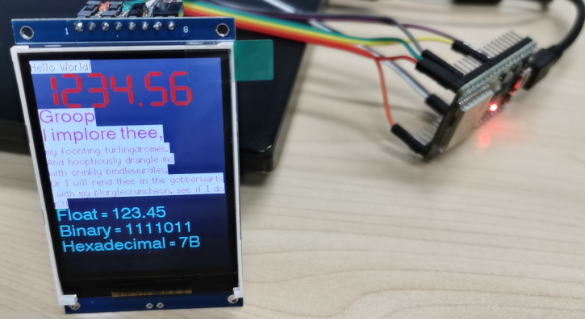
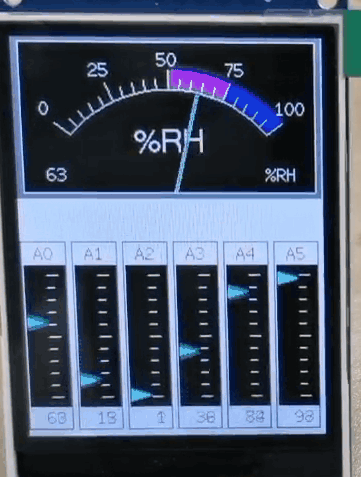

来源:https://www.cnblogs.com/21207-iHome/p/16005438.html
涨知识
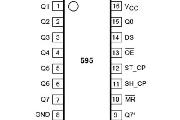
74HC595
74HC595是一个8位串行输入、并行输出的位移缓存器。并行输出为三态输出。
评论:
【ESP32 C++教程】Unit1-2 C++类基础知识
本小节主要介绍C++ 类相关的基础知识,包括类的定义、继承、多态,范围作用域等。
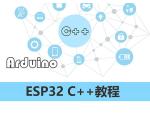
【ESP32 C++教程】Unit1-1 开发环境准备
本讲主要介绍VSCode Arduino开发环境的搭建,及与Arduino IDE开发环境的比较。
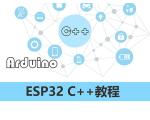
ESP32 WebServer库处理表单请求
本文主要讲解WebServer库如何来处理表单请求。
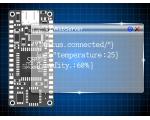
在esp32上运行WebServer
WebServer是非常常用的一个功能,在设备上使用该功能可以直接通过浏览器访问和操作设备。
Arduino-ESP32与ESP-IDF的版本对应表
Arduino-ESP32与ESP-IDF的版本对应表。
Arduino-ESP32文件系统全解析:SPIFFS、LittleFS、SD卡操作
Arduino-ESP32提供了多种文件系统解决方案,本文将深入解析SPIFFS、LittleFS和SD卡三种主流存储方案,帮助你做出最佳选择。
ESP32-P4-WIFI6开发板
ESP32-P4-WIFI6-DEV-KIT是一款微雪(Waveshare)设计的基于 ESP32-P4 的多媒体开发板,并集成 ESP32-C6,支持 Wi-Fi 6 和 BLE 5 无线连接。它提供丰富的人机交互接口,包括 MIPI-CSI (集成图像信号处理器 ISP)、MIPI-DSI、SPI、I2S、I2C、LED PWM、MCPWM、RMT、ADC、UART 和 TWAI 等。
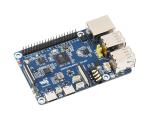
ESP-Hosted 入门介绍 &使用指南
ESP-Hosted 解决方案提供了将 ESP 板用作 Wi-Fi 和 Bluetooth/BLE 连接的通信处理器的方法。
设备上云太麻烦?ESP-Hosted一站触达!
ESP-Hosted 提供了一种将ESP芯片和模组用作通信协处理器的解决方案,该解决方案为主机微处理器或微控制器提供无线连接,使主机能够与其他设备通信。简单来说为网卡方案。






